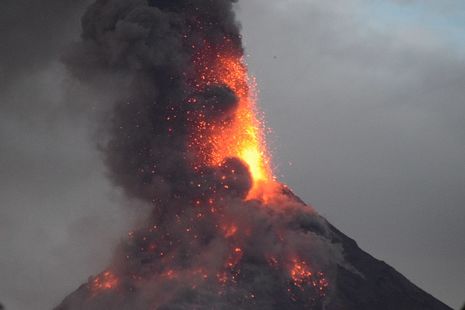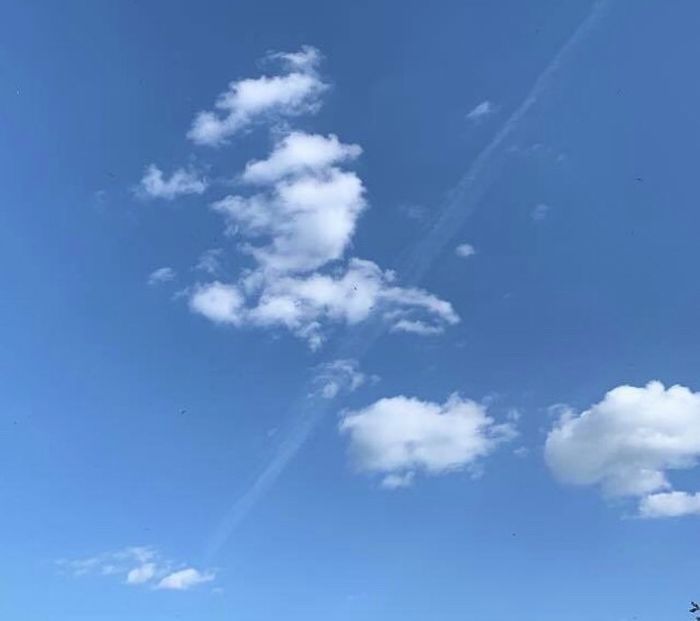Earthquakes with a chance of… volcanoes?
In her latest Earth Science article, Eloise Matthews explores some of the latest volcano monitoring techniques, and why we continue to live “alongside these irrepressible forces of nature.”

Volcanic eruptions are a danger of our dynamic planet that the human race has had to adapt to across societies and generations. In fact, many settlements are now concentrated around volcanoes due to the opportunities they present, including tourism, fertile soils for agriculture, and the potential for geothermal energy generation. Therefore, forecasting when they will erupt, to enable suitable evacuation, is vital for protecting these populations.
Fortunately, volcanoes are well-studied and there are a multitude of warning signs which enable this forecasting. One sign is the detection of shallow, low magnitude earthquakes, which are triggered by the ascent of magma, semi-molten rock which rises as it is less dense than the surrounding solid rock. Experiencing blockages on its way up causes pressure to build up, which fractures the overlying rock. These earthquakes are early warning signs – the eruption of Mount St Helens in May 1980, for example, was foreshadowed by seismic activity from mid-March of that year. The level of activity may increase sharply just before an eruption, but, like with Mount St Helens, this is not always the case.
“Improved monitoring and understanding will mean many more lives can be saved”
Magma chamber stress can be monitored to forecast when the pressure will be released and thus when an eruption is likely to occur. This process has been significantly improved in recent years by the application of a Kalman filter to the signals, which looks at temporal data and considers statistical noise to estimate future patterns, and thus when pressure may be released, triggering an eruption. This analysis method has been successfully applied, notably to study the 2008 eruption of the Okmok volcano in Alaska, despite the stress signals, which included data such as ground deformation, being particularly subtle. The Okmok volcano was also a unique example because the magma chamber grew to accommodate the increase in pressure, which likely explains the lack of notable seismic precursors and why a Kalman filter was useful for taking a more detailed approach.
In mid-October, it was reported that the Grimsvotn volcano in Iceland may soon erupt, which is another useful example, like Okmok, highlighting why volcanoes need to be monitored individually, as each will have a unique tectonic and topographic circumstance. Iceland is widely covered in glaciers, which affect both the monitoring scope and the impacts of eruptions. For example, the immense heat of erupting magma often causes glaciers to melt, and the removal of the pressure of the ice’s weight often enables explosions to then occur. Furthermore, the water can then mix with the resulting lava flow, and other volcanic rocks and ash, to create a rapid flow called a lahar. However, this may not always be the case if the ice doesn’t melt quickly. In Iceland, and many other glacial locations, structures called tuyas can form where the lava erupts in a flat “table-top” shape. Understanding different structures helps scientists forecast the nature of the products and the spatial extent that they will cover.
“Arguably the most dangerous eruption products are pyroclastic flows, generated from the collapse of the convecting plume of an ash cloud”
The release of gases acts as both a warning sign and an effect of volcanic eruptions. Their release can indicate an eruption is soon to follow; however, the contents of the gases should be closely monitored because many active volcanoes steadily release gases even when not close to erupting. Changes in composition can be indicative of an impending eruption. For example, just two weeks before Mount Pinatubo in the Philippines erupted in June 1991, the sulphur dioxide content in the emitted gases increased roughly tenfold. The overall emissions of sulphur dioxide caused global temperatures to drop by 0.6 degrees Celsius due to the formation of aerosol particles, which reflected incoming solar radiation, demonstrating the extremely widespread effects eruptions can have. This includes the distribution of ash clouds which disrupt air travel, including, perhaps most notably in recent years, during the 2010 eruption of Eyjafjallajokull in Iceland, which led to the cancellation of over 100,000 flights.
On a more local scale, arguably the most dangerous eruption products are pyroclastic flows, generated from the collapse of the convecting plume of an ash cloud. These comprise mostly rock, ash and gas, are hundreds of degrees in temperature, and destroy everything in their path when they move at hundreds of miles per hour. More minor pyroclastic flows may be produced from the collapse of lava flows. While the raining down of tephra, fragmented rock, is certainly initially hazardous, this distributes different minerals containing nutrients, which can be weathered down and incorporated into fertile soils. Once the area has recovered from the eruption event, this fertility presents large agricultural opportunities for societies around the volcano.
Geological hazard maps can be produced based on studies of the spatial effects of past eruptions. These are particularly useful for advising less technologically advanced societies by highlighting the main areas of risk. However, these are very susceptible to changes over time and the effects of individual eruptions could vary substantially based on the strength, and amount, of products.
Overall, monitoring and forecasting techniques such as those discussed in this article should increase in use worldwide as societies develop and acquire suitable technologies, such as those for obtaining data on magma chamber stress to be passed through a Kalman filter. Despite physical settlements only being able to survive the effects of eruptions to a certain extent, improved monitoring and understanding will mean many more lives can be saved, enabling the human race’s further coexistence alongside these irrepressible forces of nature.
 News / SU reluctantly registers controversial women’s soc18 December 2025
News / SU reluctantly registers controversial women’s soc18 December 2025 Features / Should I stay or should I go? Cambridge students and alumni reflect on how their memories stay with them15 December 2025
Features / Should I stay or should I go? Cambridge students and alumni reflect on how their memories stay with them15 December 2025 News / Dons warn PM about Vet School closure16 December 2025
News / Dons warn PM about Vet School closure16 December 2025 News / Cambridge study finds students learn better with notes than AI13 December 2025
News / Cambridge study finds students learn better with notes than AI13 December 2025 Comment / The magic of an eight-week term15 December 2025
Comment / The magic of an eight-week term15 December 2025









